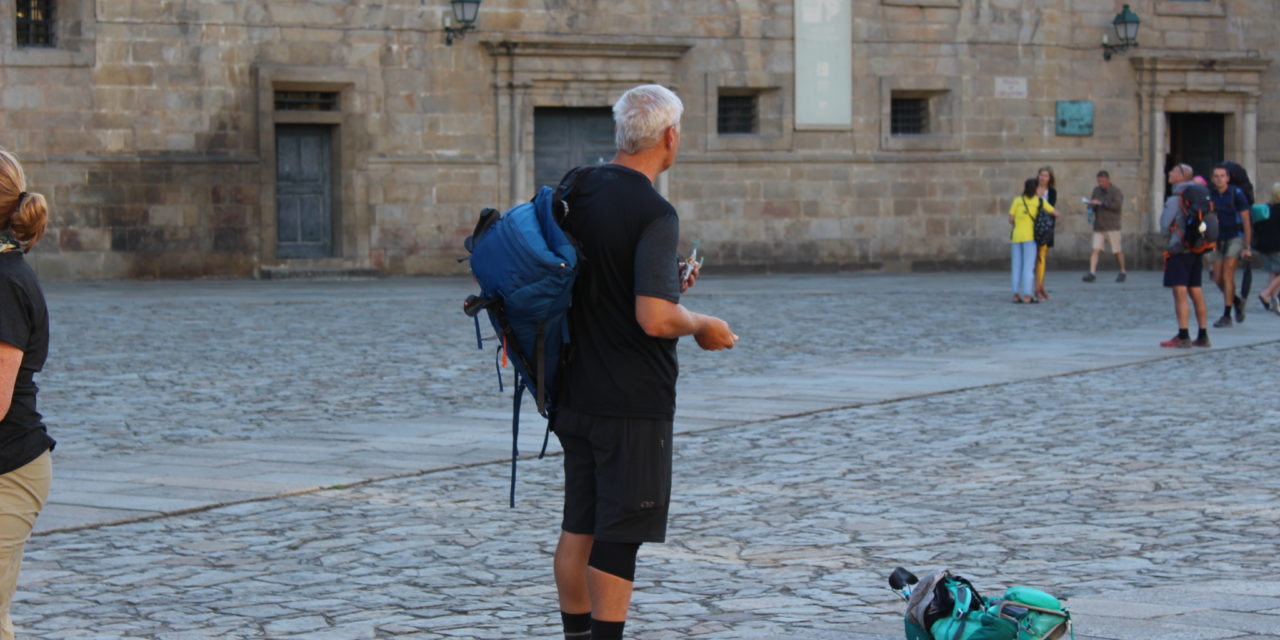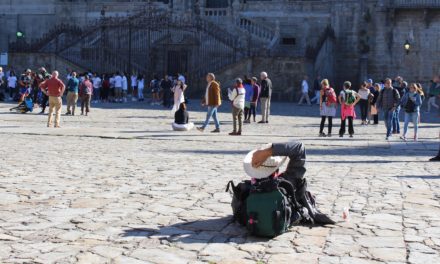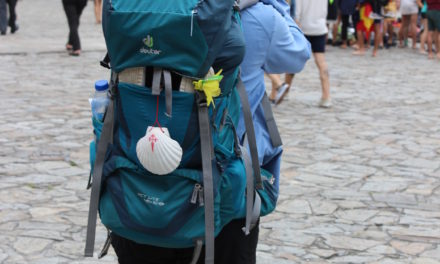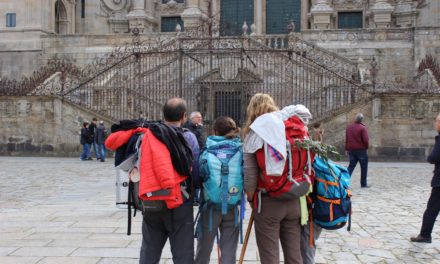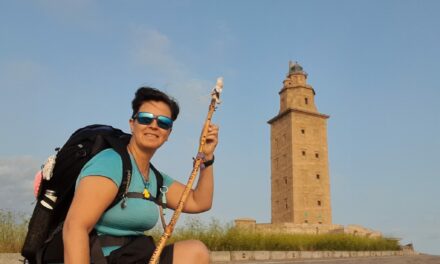In his youth he lived for years with his wife in Germany but never knew anything about the Camino. It was only years later when he returned to Europe for retirement when he discovered it. It was 1991, he travelled to Spain with his wife, to Madrid, and from there by car to Germany. His wife had heard about the monastery of Silos, then very famous for Gregorian chant, and they decided to visit it. In Silos they found 24 monks and 7 pilgrims, thus they discovered the Way. Then, in the library of the monastery, his wife took a medieval guide: the Calixtino Codex.
On that trip they discovered the Camino but they did not think about doing it. Finally, it was his wife who years later, after having known some pilgrims, decided to visit it. She began to prepare herself but, finally, he too decided to join her and in 2003 they did the Camino together. He enjoyed it very much, particularly nature: the forests, the meadows, the birds … He is a vascular surgeon and his wife is a neurologist, both of them had many responsibilities in their work and to their children, doing the Camino together was a way to meet again and have time for each other.
On the Camino people who do not know each other, live and walk together, there is a co-existence between people of different cultures and languages, bonds are created, you walk with them one hundred, two hundred kilometers … and in the end you miss these people. That this way of living with others should be possible, makes you think that peace in the world might be possible.
Another thing that is very important for him in the Camino is the attention you give to nature there, suddenly you can see that nature, see that, in reality, Eden is there.
In addition to returning frequently to the Camino and the city of Santiago, the Camino is present in his life in Brazil. He and his wife on working with a pilgrims Association and collaborated in the creation of an association and a Brotherhood of the Apostle Santiago, currently he is president of that brotherhood and responsible for their virtual magazine with which they try to spread the pilgrimage to Santiago. The brotherhood has a priest, a chaplain, who reproduces for the new Brazilian pilgrims the ritual of departure based on that of the Calixtino Codex.

